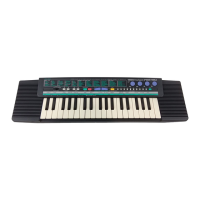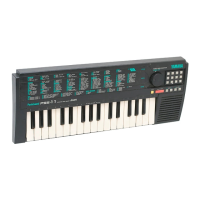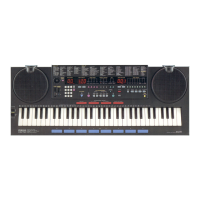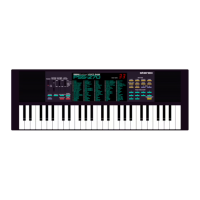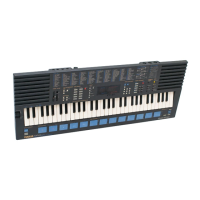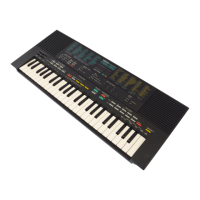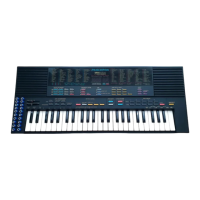
Do you have a question about the Yamaha PortaSound PSS-580 and is the answer not in the manual?
| Brand | Yamaha |
|---|---|
| Model | PortaSound PSS-580 |
| Category | Electronic Keyboard |
| Language | English |
Explains the manual's structure and how to use it for a better understanding of the PortaSound PSS-580 features.
Instructions on proper handling, cleaning, and avoiding environmental damage to the PortaSound.
Guidance on using AC adaptors, battery types, and managing battery power to prevent data loss.
Advisories on electrical safety, modifications, and avoiding electromagnetic interference.
Details on providing power, turning the instrument on/off, and adjusting volume for basic operation.
How to listen to the pre-programmed demonstration song to understand instrument capabilities.
A quick reference for selecting voices, styles, using effects, and basic rhythm/accompaniment controls.
Explains the functional structure into Voice/Melody, Rhythm, and Auto Accompaniment sections.
Details on preset voices, custom sound creation, and easy play functions like transpose.
Step-by-step guide on selecting preset sounds and playing along with the demo song.
Explains effects like Portamento, Vibrato, Sustain, and Reverb for tonal variation.
How to adjust pitch using Transpose and Tuning functions for playability and compatibility.
How to choose rhythm styles and control rhythms using dedicated buttons for variation.
Step-by-step guide on recording, programming, and playing custom rhythm patterns.
Explains NORMAL, SINGLE FINGER, FINGERED modes and how to control accompaniment instrumentation.
How to play automatic chords using one finger in the AUTO ACCOMPANIMENT SECTION.
How to start and play auto accompaniment with single finger chords and patterns.
How chord progressions are created and how the PortaSound adjusts patterns for natural musical effects.
How to play auto accompaniment using three or four-note chords in the AUTO ACCOMPANIMENT SECTION.
How to store melodies in banks, memorizing voice numbers and effects, and recording process.
Guide on recording chord progressions and auto accompaniment data, and playback operations.
Introduction to using the PortaSound as a digital synthesizer to create and store original sounds.
Explains editing preset voices by adjusting parameters and provides basic FM synthesis theory.
How attack and decay rate parameters influence the sound's volume envelope over time.
Details the function and range of operator parameters like Attack Rate and Decay Rate.
Explains MIDI as an international standard interface system for musical instruments to communicate.
Describes MIDI connectors and how to switch between Keyboard Assign and Sound Source modes.
Details data transmitted in Keyboard Assign mode and maps keys to MIDI percussion sounds.
How program change data switches voices/styles and control data affects effects.
How to select MIDI channels for receiving data and control external/internal clock.
Steps to set the MIDI channel for transmission using VALUE buttons.
Examples of connecting to standard keyboards, remote keyboards, and external drum pads.
Procedure to reset all internal settings to default values, erasing stored data.
Details data format for FM 2Operator Voice Data, including header, EOX, and data contents.
MIDI Implementation Chart for Mode 00, detailing transmitted, recognized, and remarks for functions.
MIDI Implementation Chart for Mode 99, detailing transmitted, recognized, and remarks for functions.
FCC compliance information regarding radio frequency interference and corrective measures for users in the USA.
Information on product warranty varying by marketing area and contacting the selling agency for service.

